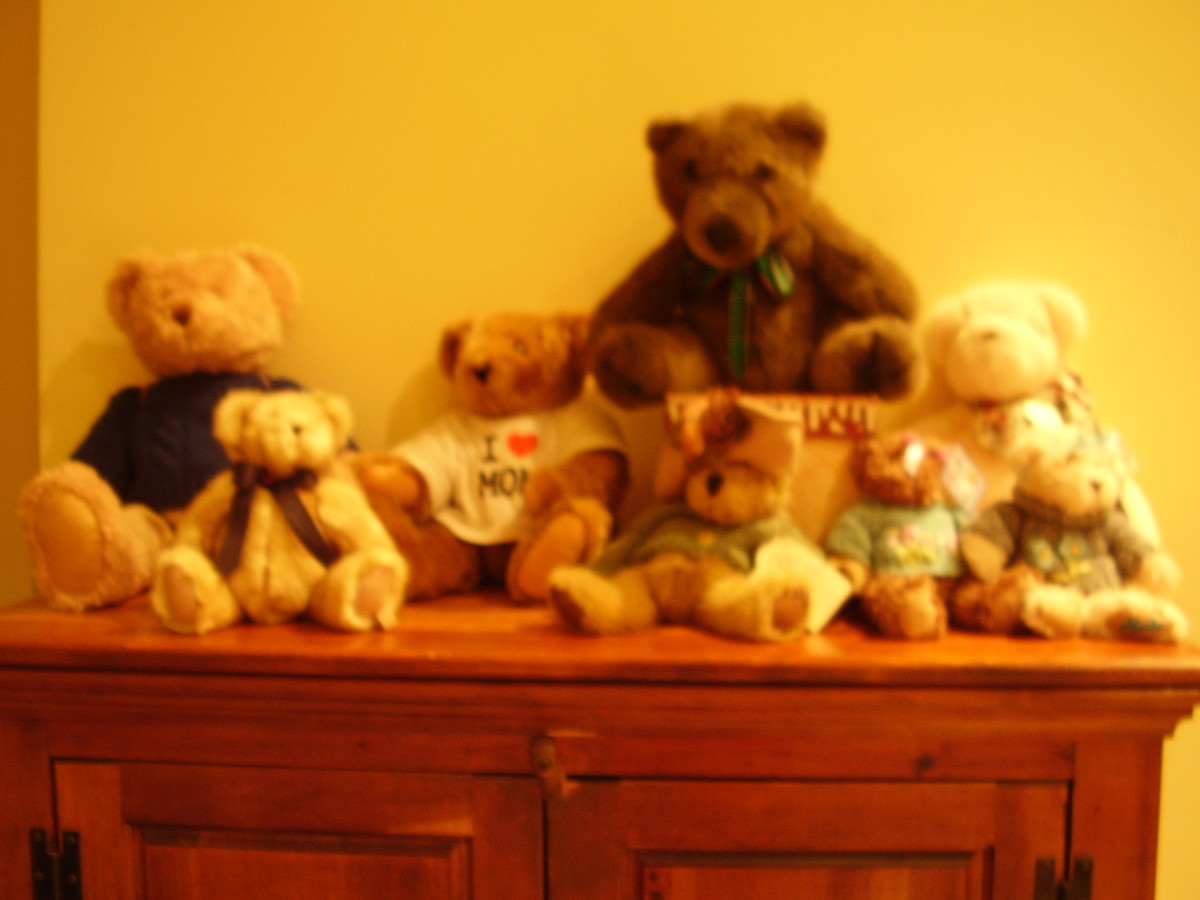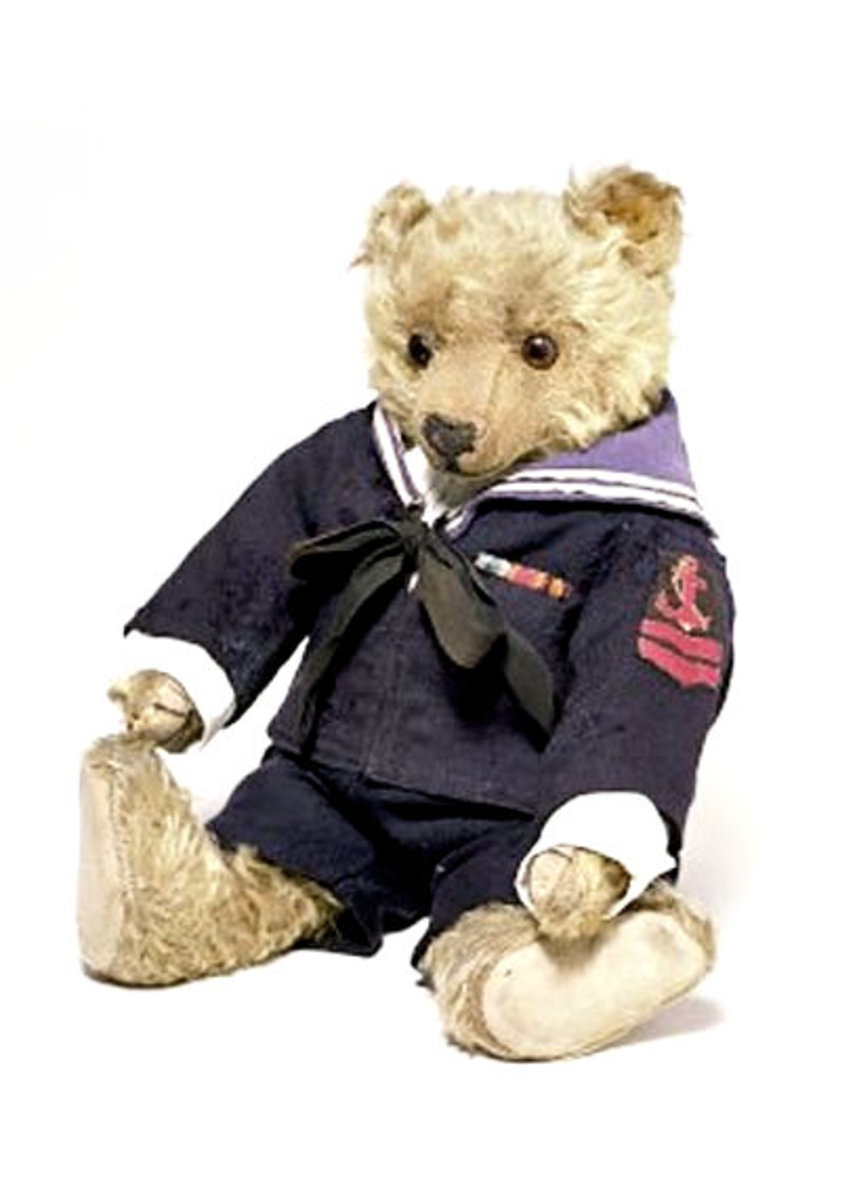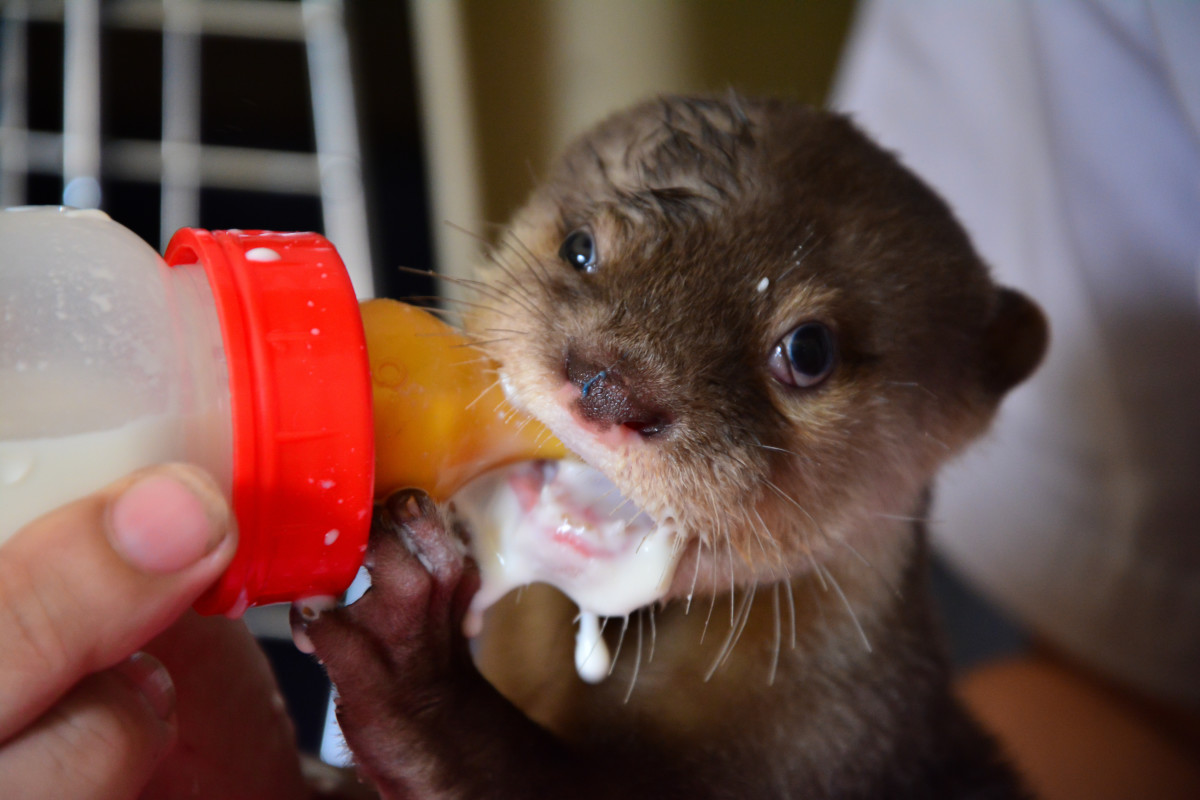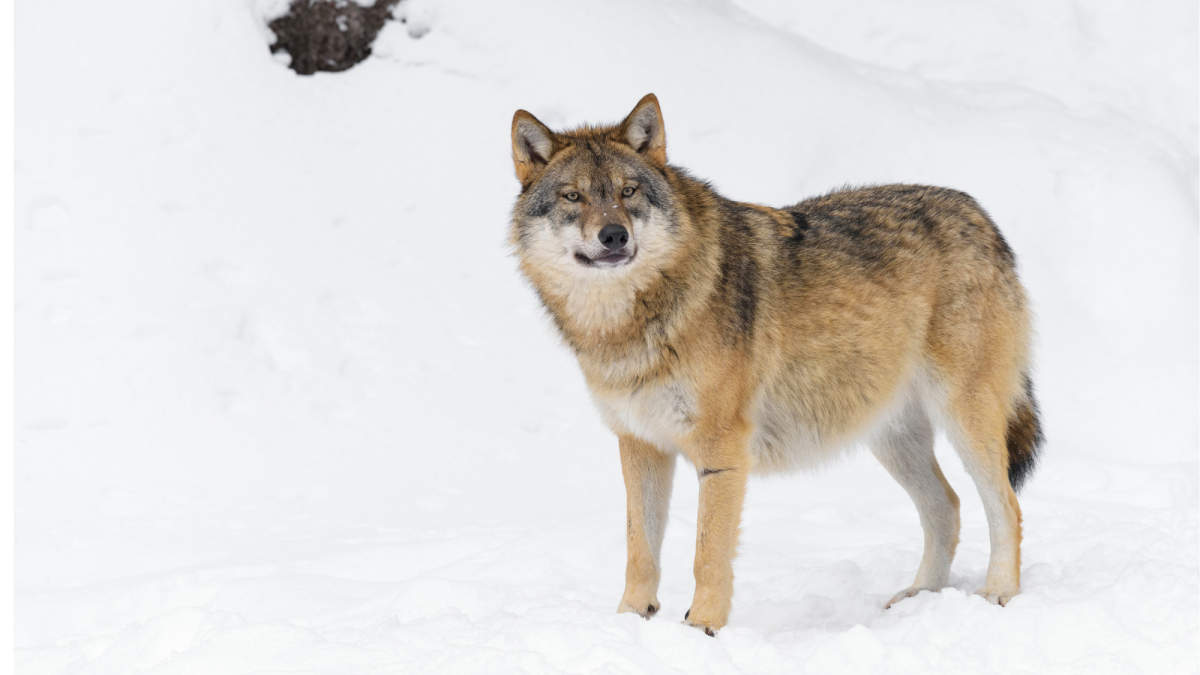Encounters With (Teddy) Bears
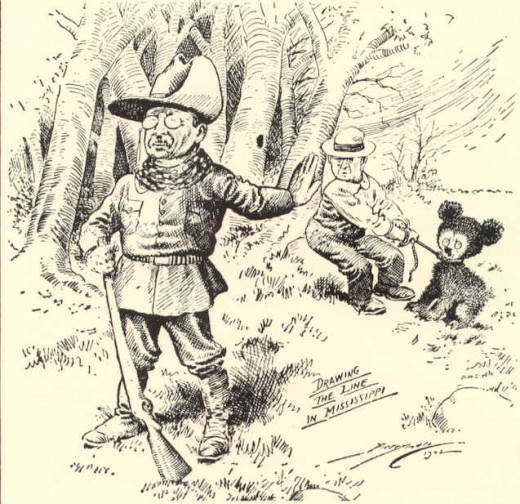
When I was a teenager, my family and I visited Athens, Greece and Istanbul, Turkey and a whole lot of islands in between. Somewhere, there is a picture of me with skinny legs and lanky fair hair standing next to a bear dressed in a waistcoat and who is chained at the neck and ankles to an organ grinder. The man next to him is old, Turkish, and hardly speaks English but says the bear will dance if we give him ten dollars. So we do and the bear sort of shuffles his chained feet on the hot asphalt.
I came home from that trip and began petitioning friends and family to help me free the dancing bears. If bears, I thought, could save us, why couldn’t we sometimes return the favor?
Today, it is illegal to have dancing bears. Bears who have been held captive are removed and taken to a good bear sanctuary where they can live out their lives happily and with space in an enclosed area where they are safe. The first bear sanctuaries were created in the early 1990’s in Greece and Turkey where they were used to end the cruel trade in dancing bears in those countries. Since then, bear sanctuaries have been set up in many countries including Germany, Thailand, Pakistan, India and China, to enable wildlife groups and the authorities in those countries to rescue bears from illegal trade or cruel exploitation. There are bear sanctuaries in the United States as well. The American Bear Association runs a bear sanctuary that is always looking for members and volunteers. The sanctuary is located in Minnesota.
The History of the Teddy Bear
The history of the teddy bear is an interesting one. The domestic American teddy bear takes his name from President Theodore (“Teddy”) Roosevelt. It was the governor of Mississippi who invited Theodore on a bear-hunting trip. On the third day of the trip everyone had spotted bear except Roosevelt. The governor could not have it that the President’s hunting trip be a failure so, he ordered some men with the hunt dogs to track down a bear they had been chasing. The crew returned with a large adult bear who was tired and wounded and proceeded to tie him to a tree where the President could shoot him.
On seeing the state of the poor bear, Roosevelt refused to shoot the bear but instead ordered that someone else kill the animal so that he would be put of his suffering. The Washington Post ran a cartoon the next day that showed the President with his back turned on a young bear cub who was chained at the neck to a tree.
On seeing the cartoon, a couple in Brooklyn who owned and operated a candy store made a couple of stuffed bears and put them in the window. After obtaining permission from the President, the couple named the bears “Teddy’s bears”. The bears became an instant success. To meet mass-market demand, the couple formed Ideal Novelty and Toy Company to produce the bears. Teddy bears became so chic that women began carrying them as accessories and the President used a Teddy Bear as a mascot during his campaign. Soon, bears began appearing in family photos posed as part of the family.
A Dark Wood | The Original German Bears
The first bears were made in Germany and had no official name other than stuffed bears. These bears were generally covered with mohair and had short golden fur and long bear-like snouts and brown glass eyes. They had jointed arms and legs, and could rest on all fours as well as on their haunches. An American saw the stuffed bears (made by Steiff , now one of the classic teddy bears) and ordered three thousand to be exported to the United States. Unfortunately, the German bear fleet never made it to shore. They were likely ship-wrecked and subsequently lost at sea.
Steiff bears did eventually make it to the United States. Like most of the real “official” teddy bears, Steiff bears are priced at around $198 dollars. Why so much for a bear? When you consider that these bears are meant to last a lifetime, two hundred dollars doesn’t seem like that much really. It is a life-time of comfort, security, and love. My own bear (made by Russ) has lasted a half a lifetime and is doing well: I don’t think he was either expensive nor inexpensive.
His brother, the stuffed elephant, is the same, though he has required some fixing of his velvet paws, some re-covering which a lovely, older man from Italy who runs a tailoring business in my neighborhood did for me. He was seated in a back-room, long dresses and sharp tweedy suits hanging all around him, waiting to be fixed, taken in and let out. He seemed delighted to have a stuffed elephant to work and my elephant was returned to me with velvety soft paws.
The Bear-Repair Business | Teddy Bear Hospital
If your local tailor isn’t in the bear-repair business, there are many Teddy Bear Hospitals in the United States. If your bear should take ill, you can send him (or her) to The Teddy Bear Hospital of Pittsburgh where the staff there will nurse your bear back to health. Your bear can also try the Stuffed Animal Hospital at where for $49.95 your bear gets an ambulance ride to the hospital, (a square box and postage), a hospital bracelet, recommendation for treatment and estimate, quality care and repair, and finally an ambulance ride back home.
You can also try Salley Winey’s Bear Hospital in North Carolina, which takes in bears and other wounded animals and re-stuffs, repairs, re-covers when necessary, and cleans your creature for a set price. If you have to ask why do this and why not just buy a new bear (or other creature) who looks exactly like the old one, then I suspect you don’t understand about teddy bears at all.
There are those who know the real love between a person and their bear. To these people, it is not surprising that police, fire, and other emergency-rescue personnel report that giving bears and stuffed animals to children in crisis instantly calms them down.
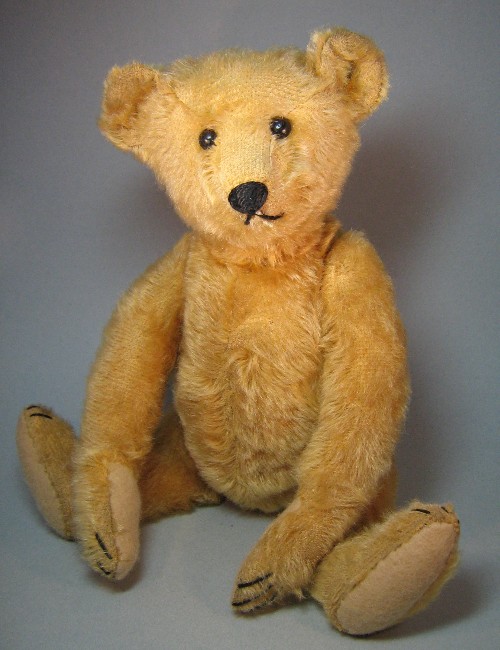
Teddy Bear Cops
Teddy Bear Cops (based out of Arkansas) is a non-profit organization that takes in bears and other animals and gives them to rescue workers who in turn give the stuffed animals to children during emergencies. Teddy Bear Cops seeks donations of wheelchairs and other medical equipment, but one of their primary functions is to provide comfort: and they have done so by providing teddy bears.
Another teddy bear organization is the Teddy Bear Foundation in Scotland which helps children with special needs and mental health issues. The Teddy Bear foundation has a make-shift apartment and a garden, both of which are used to teach handicapped children how to complete every day chores like making their bed, helping prepare meals, and showing them how to garden. Children learn to be more of a participant in their home lives (how much they can learn will vary depending on the child and their particular disability). Children who graduate the program are better able to participate in family meal times, help with chores, and simple outdoor activities.
Then there is the Ms. Teddy Bear organization. Ms. Teddy Bear is a private company that, if you give them a good enough reason that you put in writing and send by email, will donate a lot of teddy bears to the charity or cause or group of your choice. To date, Ms. Teddy Bear has provided teddy bears to the surviving children of the Sandy Hook tragedy, bears for Michael Jackson’s memorial service, the Make-a-Wish Foundation, children’s hospitals all over the United States, survivors of an earthquake in China, various churches worldwide, and relief missions for the poor everywhere. These bears are sent to the individual who makes the request and then distributed from there. If before now you thought a teddy bear couldn’t change the world, by now you know you were wrong.
Teddy bears have given more comfort to children in crisis, more love and feelings of security to adults throughout their lives than they got credit for. Thank goodness there are organizations that know this and that give bears away when we can’t afford them and that there are bear hospitals to help get them better when they fall apart so we don’t fall apart.
My favorite bear story is a relatively contemporary book called A Story for Bear by Dennis Haseley and Jim LaMarche. In this delightfully illustrated book, a young, curious bear is nosing through the woods when he smells the smells of cooking and decides to follow his nose. This leads him to a small cabin in the woods and seated out back he finds a woman reading a book. The bear and the woman become friends and she reads to the somewhat bewildered bear who likes being read to but doesn’t quite understand what he is being told. Still, he understands that the woman is kind and that he likes her. It is a connection between the natural world of the bear and human socialized life intersecting. At the end, the bear is left alone in the woods. There is a melancholic note to this tale: at the end the bear must be left alone in the woods with nothing but a pile of books and the winter hibernation. It is about a woman wbo has to leave the woods and the bear’s need to live as a wild bear. If children like this story, and they do, it is because they can see themselves and their teddy bear in this story.
Winne the Pooh is the famous honey-seeking honey-loving bear created by author A.A. Milne. He is the bear from the Hundred Acre Wood who is always philosophizing and musing and scheming ways to get honey (and more honey) and who has become a character in the modern age with books who we turn to for his simple wisdom as evidenced by such books as The Tao of Pooh.
The Bear Who Played With Fire
My first bear was a black-and-white panda bear who was given to me on the day of my christening and who was roughly the same size as me. I loved that bear and was never without him “Bogeyman”, that was his name, came with me everywhere.
When he was dirty my mother would give him a bath and he would be like new again. One night Bogeyman had a bath and was sitting by the heater to dry when he suddenly caught fire. His fur melted and bubbled . We took him to the neighbor’s house – a woman who was a seamstress so this was sort of a bear hospital – who recovered him with a patterned fabric. And he was good as new until he caught fire again and had to be recovered again.
The Nazi-Fighting Bear
Wojtek | The Bear Who Went To War
Bears, for all their temper in the wild, have long been endeared to us. The Polish army during World War II adopted a Syrian brown bear they found in Iran who had been orphaned by hunters that had killed his parents. The troops adopted the young cub and he lived as one of them, sharing their quarters and even play-wrestling with them. When they were crossing a national border, the crossing guard informed the troops that they would have to leave their bear cub behind: “soldiers only”. The soldiers, who had grown very attached to the bear, had to find a way around this. Finally, they decided that since the bear really was so much like one of them, why not just assign him a rank and number. The bear became a regular soldier and crossed the border as one of the soldiers. Wojtek bear quickly became one of the troops. He slept in a rubber dish sink in the tent with the soldiers, he wrestled with them, drank beer with them, and even smoked cigarettes from time to time.
Wojtek is remembered as The Bear That Went To War and as a war hero. He carried artillery for the troops at several battles, including the Battle of Monte Cassino in 1944. So why did the soldiers relate so well to the bear? For one, a lot of them had many of the same concerns. They felt orphaned, that they no longer had a country, and many had seen their family and friends die.
When the war was over, the soldiers were stationed in a rural area of Scotland where they stayed until they knew where they were going. In the daytime, the soldiers wondered about themselves but every night, the conversation would inevitability turn back to Wojtek and what was going to happen to the beloved bear. The soldiers all loved him a great deal and didn’t want any harm to come to him. Finally, they agreed to send the bear to a good, safe, and loving home at the Edinburgh Zoo in Scotland where Wojtek lived a good life until he died in the mid-sixties.
In Scotland, there is a Wojtek Memorial Trust that received 20,000 pounds to erect a memorial to the “Nazi-fighting bear”. There is also a film documentary about Wojtek called “Wojtek: The Bear That Went To War”.
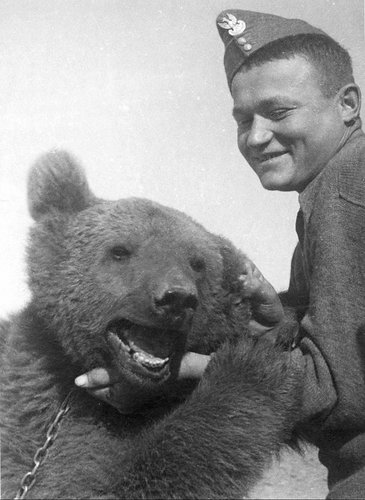
Timothy Treadwell | Grizzly Man
Timothy Treadwell was mauled and eaten alive by a bear. Treadwell had spent thirteen summers in the Alaskan wilderness in a very remote protected preserve that was totally barren of other people. To Treadwell, a rather eccentric but apparently well-meaning individual, this was ideal. He felt he could commune with the bears (he really believed that he and the bears had some sort of understanding and, that instead of posing a threat to him, in Treadwell’s mind it was the modern world with people and machinery that posed the threat and not the bears that he sought to protect.
The results of Treadwell’s extensive filming of bears in the wild and of his interactions with them have been put together in the documentary “Grizzly Man” (edited by Werner Herzog). Grizzly Man premiered at the 2005 Sundance Film Festival and its limited US theater release began on August 12, 2005. It was later released on DVD in the United States on December 26, 2005.
This is not a typical documentary. For one, on the surface of things Treadwell doesn’t appear to be a certified naturalist, environmentalist, or anyone trained at all to work with animals. He is rather a guy who really felt a kinship with bears and decided after grappling with substance issues to head off to the wildnerness and live with them and film the results. Treadwell was popular with children, who liked to hear his stories about bears in the wild. But in real life, Treadwell anthropomorphized the bears: he gave them cute names, slept in a tent in the middle of their foraging and hunting ground, cursed G-d and Allah and the “Indian floaty god” when it wouldn’t rain and the bears were hungry (“Melissa is even eating her cubs” he says on his film), and even curses the National Park Service though it isn’t quite clear why.
By the end of the documentary, for all of the real love I sense coming from Treadwell toward nature and wild animals, what emerges is a man who is really lonely and feels wronged and rejected by the world of people. A child-man who feels more comfortable with wild animals who to him seem cute and furry and while Treadwell constantly says to the camera (really to the audience) that he is “risking his life every day” to spend time with the bears which is true, he doesn’t seem to fully grasp what that means.
Nor does he ever stop to think that by being so friendly with the bears and establishing this human contact he is making them more vulnerable to other people – say hunters and poachers and teaching the bears not to fear when really, they ought be afraid of people just as we ought be afraid of them. Park rangers again point out that bears are wild and potentially dangerous animals and that it was amazing that Treadwell survived as many years as he did in the national park without being mauled. One park ranger clearly astonished by Treadwell's actions, speculated that the bears themselves were so confused by Treadwell's direct casual contact that they weren't quite sure how to react and that is how Treadwell survived.
Treadwell was with his then-girlfriend Amie Huguenard at the time of the attack. Huguenard, who does not appear on film save for a brief moment which is an accident, was afraid of bears and was there only to keep her boyfriend company. Treadwell had recorded in his diary a few days before the attack that Amie had asked him to leave but for whatever reason, the two had stayed on. A day or so later, the couple were killed.
The attack was captured on audio. The camera, which had fallen by the side of the tent was found to be running but had not captured video because the lens cap was on at the time. But all sound of the mauling is captured on audio (this is not included in the film out of deference to Treadwell and Huguenard’s family).
The truth is, when I saw this documentary it seemed to me that Treadwell was rather a lost soul who got along with kids and animals better than he got along with other adults. In his own footage, Treadwell comes across as someone who is rather sweet, rather soppy, and prone to temper tantrums, which he records with his video camera: “Fuck you federal government! Fuck you national park service!” and so on, accompanied with foot stamps and flips of the finger. Still, it is like watching a child who has lost control. I couldn’t help but think of the hard life Treadwell had had before then and how he felt so rejected and out he had chosen to isolate himself, out there in the Alaskan wilderness for a whole summer. It’s hard enough not to talk to another person for only a week, I thought. Imagine being in a vast area with nothing but mountain and sky and river and bears and not seeing another living person or talking to one for months? Even the most sane person might go more than a little dotty.
And while Treadwell says repeatedly on film that he will die for “these bears” (and he does), he doesn’t factor into the equation that the bears too might die because of him. In the final account, for all his love of the bears and all his empathy, Treadwell didn’t understand that he wasn’t really doing them any favors by socializing them to accept people. “I will protect these bears with my last breath', Treadwell says multiple times. He was well-intentioned but misguided. Treadwell and his girlfriend Amie are the first and only people to be killed by bears in Katmai National Park. The two bears that ate them were shot multiple times by the park service who retrieved body parts ftom the bears’s stomach.
Treadwell had originally wanted to be an actor but it had not worked out. He had developed some problems with drugs and had determined he had to clean himself up. He took off on a motorcycle and wound up camping on the Alaskan Peninsula with wild bears, where, he determined, he could do a lot of good. He would change his life, because as Treadwell saw it, the bears had saved his life. Treadwell had found some peace and some harmony in the Alaskan wilderness – but that the bears had accepted him as part of their family and felt as at home with Treadwell as he felt with them seems doubtful.
Wojtek bear, the Polish war bear, was orphaned and was taken in by soldiers and socialized from when he was a cub. Wojtek was with human beings twenty-four hours a day seven days a week. He slept in an old dish tub and lived and fought side-by-side with the soldiers without ever attacking them (not a chance most of us would or should ever take, frankly). Treadwell’s situation was like Wojtek’s only in reverse. Treadwell himself was rather like a lost soul, orphaned in the wilderness with some mental illness that he preferred to leave untreated. He was a person with a good heart. To Treadwell, the bears were his family: his last hope. But for as close as the bears got to him, in the end they never accepted Treadwell as one of their own. Not for any shortcoming of Treadwell’s but for the simple fact that bears are bears and people are people.
Treadwell true to his word would die for bears and in the end, he did die. Treadwell’s real legacy is the outstanding footage not just of bears observed in the wild, but really, of wild bears interacting so intimately with a human being – Treadwell petting their noses, touching them on the back, speaking to them less than a foot away, swimming with them: how long the bears accepted him. I tend to think that if there was a “real” and a “false” Timothy Treadwell, the real one is the one we see playing with the bears – the gentle, kind warrior who died where he was happiest– though I’m not entirely sure why. Treadwell thought his presence might deter bear hunters. In the end, both bear and Treadwell and another person lost their lives.


